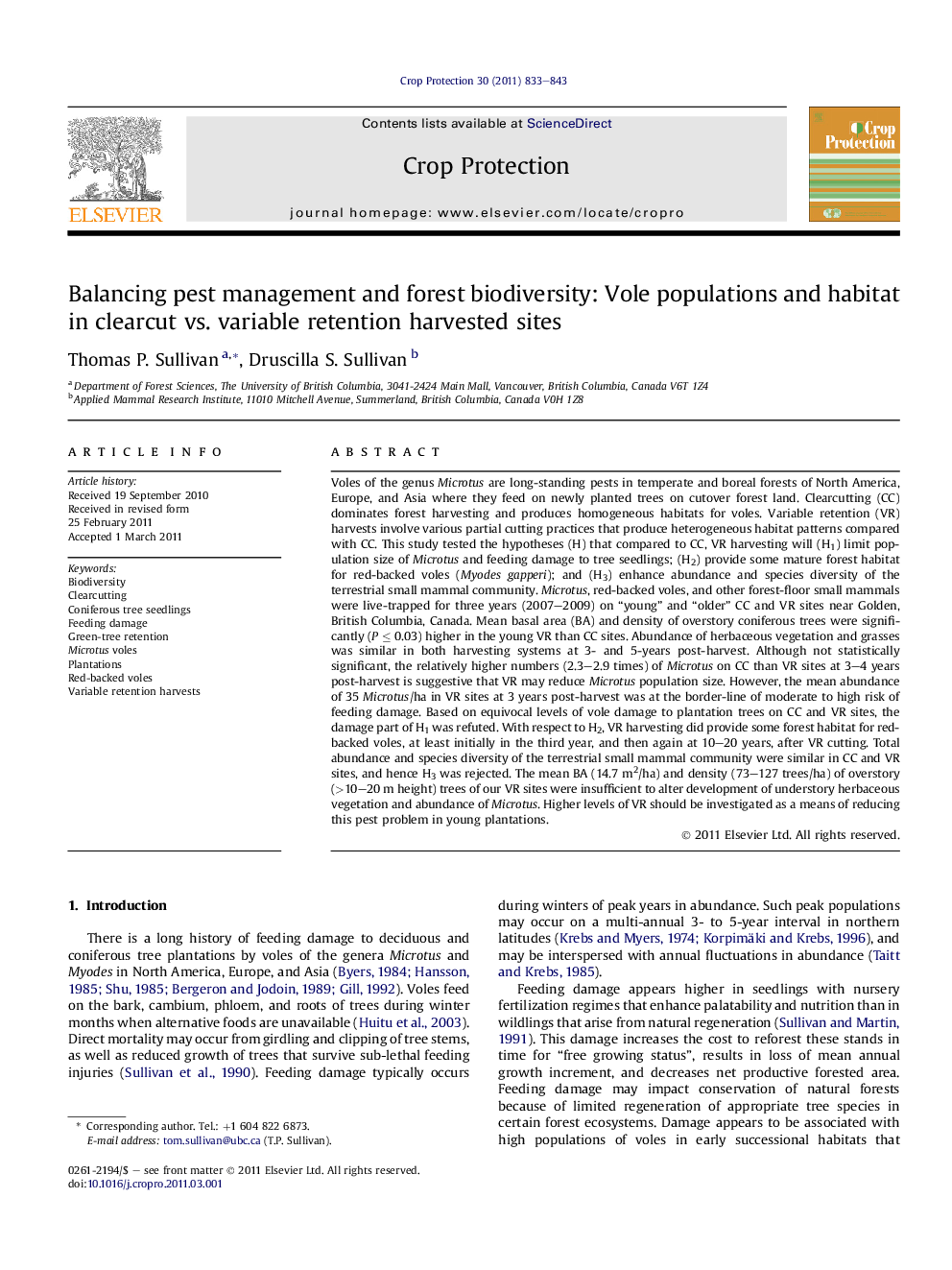| کد مقاله | کد نشریه | سال انتشار | مقاله انگلیسی | نسخه تمام متن |
|---|---|---|---|---|
| 4506868 | 1321333 | 2011 | 11 صفحه PDF | دانلود رایگان |

Voles of the genus Microtus are long-standing pests in temperate and boreal forests of North America, Europe, and Asia where they feed on newly planted trees on cutover forest land. Clearcutting (CC) dominates forest harvesting and produces homogeneous habitats for voles. Variable retention (VR) harvests involve various partial cutting practices that produce heterogeneous habitat patterns compared with CC. This study tested the hypotheses (H) that compared to CC, VR harvesting will (H1) limit population size of Microtus and feeding damage to tree seedlings; (H2) provide some mature forest habitat for red-backed voles (Myodes gapperi); and (H3) enhance abundance and species diversity of the terrestrial small mammal community. Microtus, red-backed voles, and other forest-floor small mammals were live-trapped for three years (2007–2009) on “young” and “older” CC and VR sites near Golden, British Columbia, Canada. Mean basal area (BA) and density of overstory coniferous trees were significantly (P ≤ 0.03) higher in the young VR than CC sites. Abundance of herbaceous vegetation and grasses was similar in both harvesting systems at 3- and 5-years post-harvest. Although not statistically significant, the relatively higher numbers (2.3–2.9 times) of Microtus on CC than VR sites at 3–4 years post-harvest is suggestive that VR may reduce Microtus population size. However, the mean abundance of 35 Microtus/ha in VR sites at 3 years post-harvest was at the border-line of moderate to high risk of feeding damage. Based on equivocal levels of vole damage to plantation trees on CC and VR sites, the damage part of H1 was refuted. With respect to H2, VR harvesting did provide some forest habitat for red-backed voles, at least initially in the third year, and then again at 10–20 years, after VR cutting. Total abundance and species diversity of the terrestrial small mammal community were similar in CC and VR sites, and hence H3 was rejected. The mean BA (14.7 m2/ha) and density (73–127 trees/ha) of overstory (>10–20 m height) trees of our VR sites were insufficient to alter development of understory herbaceous vegetation and abundance of Microtus. Higher levels of VR should be investigated as a means of reducing this pest problem in young plantations.
► First long-term analysis of changes in vole pest numbers in clearcut and variable retention forest sites.
► Vole numbers tended to be higher on clearcut sites but still reached critical damage levels on retention sites.
► Equivocal levels of vole damage to plantation trees on CC and VR sites.
► Higher levels of GTR should be investigated as a means of reducing this pest problem in young plantations.
Journal: Crop Protection - Volume 30, Issue 7, July 2011, Pages 833–843